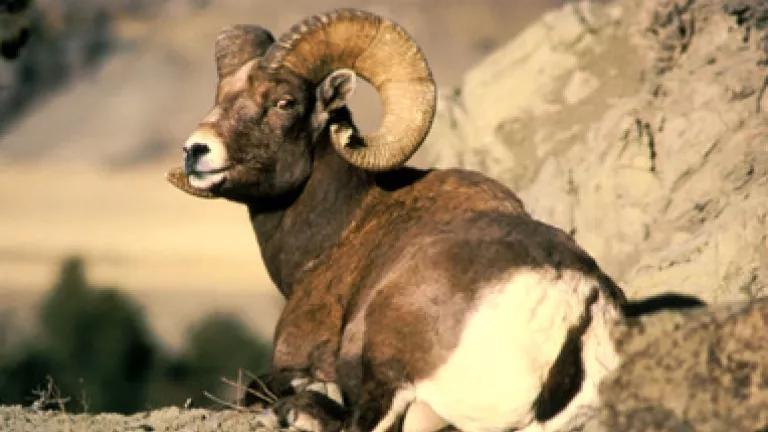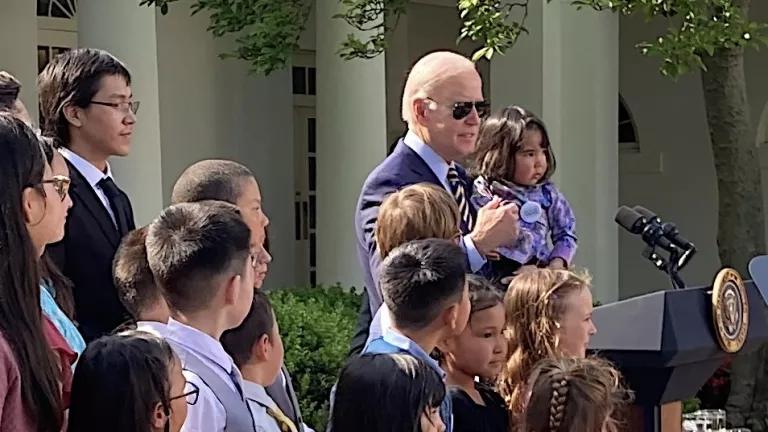
A century ago, wild bighorn sheep thrived in the United States, numbering in the millions. But settlement left the various bighorn populations of the West nearly extinct. By 1960, there were no more than 8,000 bighorns remaining in the United States. A number of factors lead to this precipitous decline, including predation and habitat fragmentation, but contact with domestic grazing sheep was possibly the most harmful to the viability of this iconic species. This was due to the fact that domestic sheep, who are often attracted to bighorn herds, are carriers of a deadly and virulent form of pneumonia that bighorns lack immunity to. Only in the last decade have federal and state agencies been fully committed to implementing measures to isolate domestic sheep operations from coming into contact with bighorns. But even under the best circumstances, domestic sheep have proven difficult to contain in the rugged West. In one recent and notable incident in 2009, bighorn sheep that came into contact with domestic sheep in the mountains of Nevada, resulted in the deaths of 88 bighorns and one mountain goat – those 88 bighorns representing one-third of the population in that particular region. Because of this, recent steps have been made by the Forest Service to strategically limit domestic sheep grazing in certain discrete areas, to guarantee that sheep and bighorns do not come into contact with each other.
With that as a backdrop, the Forest Service and the Bureau of Land Management, working with state fish and wildlife agencies, tribes, conservationists, and sportsmen have redoubled efforts to restore bighorn population. Measures have included the transplanting of bighorns into new areas and regions, instituting controlled hunts to selectively manage populations, and implementing safeguards to reduce conflicts with livestock grazing operations. This intense level of engagement has proven to be fairly successful. In fact, these measures have nearly tripled the population count for bighorns from their low in the 1960’s.
However, the FY 2012 Interior-Environment Appropriations Bill contains two riders that would undo this work and eliminate nearly all protections for bighorn sheep (some subspecies of which are threatened or endangered). These riders would do this to simply benefit a handful of sheep ranchers, mainly in Idaho, who fundamentally oppose implementing measures that would reduce conflicts with bighorns stemming from their sheep grazing operations in the Hells Canyon National Recreation Area of Idaho and Oregon.
The two riders, which will be voted on in the upcoming days, would prohibit agencies from taking any steps to manage bighorn sheep if such actions would interfere with the grazing of domestic sheep on federal lands. Furthermore, it would undermine decades of work and the millions of dollars invested to restore populations of bighorns in the West. And on a fairness level, these riders amount to earmarks given that they stand to economically benefit a select few ranchers, placing their interests far and above the greater good.
In jeopardizing the very viability of bighorns, these provisions would drastically reduce tourism revenues in western states. Last year, nearly 30,000 visitors signed in at the Hells Canyon National Recreation Area, most of who came to view wildlife, including bighorns. Further, these riders would decrease revenue produced by licenses to hunt bighorns. To date, bighorn hunting permits, which often sell for more than $100,000 a piece, have produced over $3.2 million in the tri-state region. Lastly, these riders would render significant past investments in wild bighorn sheep recovery moot.
In the early part of my career, I had the privilege of working side-by-side with members of the Wild Sheep Foundation in addressing issues that threatened the viability of an initiative to reintroduce California bighorn sheep in the Owyhee Canyonlands of southwestern Idaho (the Wild Sheep Foundation or more commonly known as FNAWS -derived from their previous moniker as the Foundation for North American Wild Sheep - is an organization whose singular focus is to promote the conservation of wild sheep). Until grazing domestic sheep came to the region in the 19th Century, the Owyhee Canyonlands was perfect bighorn country, with steep canyon draws and millions of acres of high altitude rangeland for them to roam and breed. But by the 1920s, bighorns had completely disappeared in the region, which set the stage for bringing back the bighorns in the 1980's & 90’s. At the time of the reintroduction, bighorns faced a myriad of threats (beyond coming into contact with domestic sheep), but the dedication of FNAWS members was remarkable, especially for someone like myself who was just embarking on their career in conservation. FNAWS members volunteered thousands of hours of their time, mainly on their own dime, to work with the local government officials, members of the Shoshone-Paiute Tribe, and ranchers, to implement a coordinated plan to see the reintroduction through. Given the fragility of the species, there was no guarantee that reintroduction would work – it was a crapshoot from the get-go. But they preserved and tackled a number of complex issues. Maybe the most notable part of this effort, especially in retrospect, was how totally removed it was from politics. The bighorn advocates made sure that broad consensus amongst all of the stakeholders was secured before committing to a plan.
I look back at those times for inspiration, but the memories are also now colored by a personal frustration with what is being proposed by this Congress – that more than a few Congressmen would choose to make cheap political points out of these initiatives. What is most unfortunate is that these issues should be firewalled against politics, but Congress has chosen a more cynical path which sends this message: that even if you do everything right by seeking consensus based solutions, it might not be enough to overcome well-connected special interests. And that is precisely what these riders set out to do, change the rules when it does not suit the interests of a connected few.




